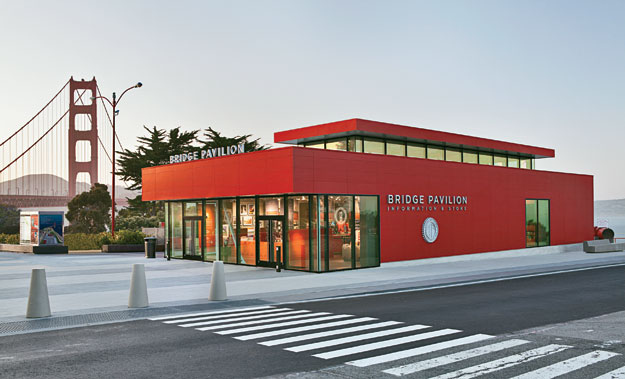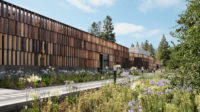 |
|
For the Golden Gate Bridge’s new welcome center, San Francisco-based Project Frog selected a fiber-cement cladding that was easily finished with the landmark’s signature color, while also offering the moisturecontrol benefits of a rainscreen system. Photo © Mariko Reed |
Not many bridges are well known enough to merit their own visitors' center, but San Francisco's Golden Gate is an exception. In May, as part of the bridge's 75th-anniversary celebration, the Golden Gate National Parks Conservancy opened the Bridge Pavilion to welcome an estimated 10 million annual visitors to the site. Located next to the toll plaza on the San Francisco side of the bridge, the 3,500-square-foot pavilion is linked to the world-famous landmark by color, employing an International Orange fiber-cement cladding from Nichiha USA.





Post a comment to this article
Report Abusive Comment